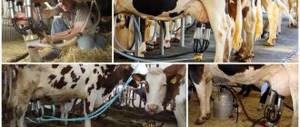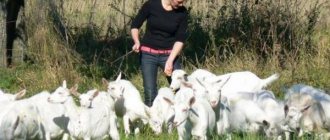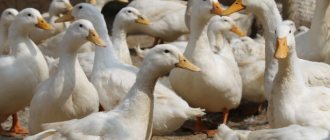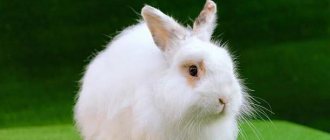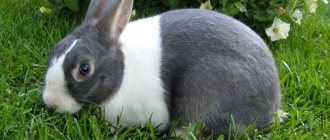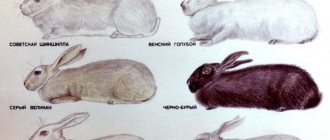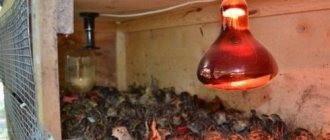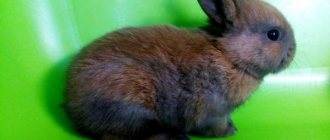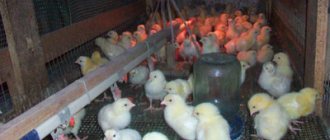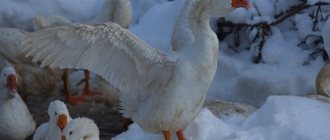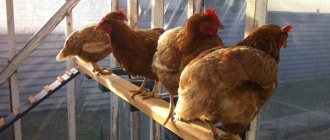Farms and barns
A well-built animal farm is the dream of any professional breeder. The health of the livestock directly depends on how comfortable the conditions are. The requirements for the improvement of buildings are quite high, but this fact is compensated by the fact that with proper care, the overall productivity of livestock increases, and a person makes a profit. This article will describe what types of buildings there are for cows, outline the types of structures being built and the features of the materials for their manufacture.
Basic technical requirements for buildings
The main reason for the fundamental importance of choice is that the vital activity of the cow directly depends on the ambient temperature. Animals cannot stand stuffiness and cold. The optimal indicator varies from 8 to 10 degrees above zero. However, in the summer it is difficult to achieve this, so the norm during this period is +20-25 degrees. The above conditions can only be achieved if the sheds are built correctly.
The construction of a cow house must follow strictly defined technical regulations. The basic rules include the following:
In addition to the above, it is very important to choose environmentally friendly materials for future construction that will not harm the life and health of the animal. Such raw materials include brick, adobe and all types of wood.
Two years of idleness, your own pond and healthy eating
In the production of quality dairy products, the conditions in which the cows are kept and the place where they live play a major role. It is better if this is a real farm in an ecologically clean area, headed by a person with many years of experience. One of these is the Zarya agricultural cooperative in the Talitsky district. It's My City went there to find out under what conditions the milk that is supplied to the Talitsky dairy plant is produced here.
The agricultural cooperative "Zarya" is the largest enterprise in the Talitsky district, located in the village of Vnov-Yurmytskoye, 40 km from the city of Talitsy. Local residents say that their ancestors have been engaged in agriculture since the founding of the village.
The entire farm stretches 32 km wide and 50 km long. It is so large that its head does not have time to conduct a control detour in a day.
Nikolai Zavyalov has been heading Zarya for 20 years. As he himself says, “he was accustomed to the work of a rural worker” from childhood: his father and mother worked on a collective farm, and besides, the Zavyalovs also had their own subsidiary plot. In the past, he worked as an agronomist, was the head of the village of Tygish, Bogdanovichi district, but did not settle down there; he says that “his native village always beckoned.” According to Nikolai Semenovich, out of nostalgia for “his Yurmyt,” he returned to his native village in the early 1990s, and in the 2000s he headed the Zarya cooperative.
"Zarya" - four dairy farms (one of them robotic), a horse farm, meat and grain farms. The enterprise independently provides animal feed, because wheat, oats, barley and other grain crops are grown here, 70% of which goes to animal feed, the rest for marketing.
Farm workers pay great attention to balanced nutrition of animals. The daily diet of cows includes roughage, that is, hay and straw, succulent feed - grass or silage, and concentrated feed - cakes, minerals, vitamins. Even a person does not always follow these principles of proper nutrition.
Therefore, milk from the Zarya agricultural cooperative differs in quality and taste. It contains a higher percentage of fat.
Now there are 730 cows on the farm. Cows begin to produce milk in the third year after birth. Before this, the animals just eat and walk. They produce milk after they calve.
To obtain good milk, it is important to properly house the animals. The barn provides a special microclimate for them. The level of lighting, temperature and humidity is adjusted depending on weather conditions.
Cows also have their own care procedures. The so-called “cow pedicure” or hoof trimming is carried out regularly, once a year. This helps avoid lameness. If a cow is lame or has problems with her limbs, she will produce less milk.
Cows walk and rest on free grazing. It is believed that this strengthens the animals' immunity; cows eat fresh grass and receive more vitamins.
On the farm, the animals have their own pond where they can swim. The reservoir was dug especially for them on the initiative of the head of the farm, Nikolai Zavyalov.
Robotization of farms has a good effect on the quality of milk. Milking machines help increase the lactation of animals. A cow begins to pay for itself only after three years; the planned milk yield is up to 8 thousand liters per year.
Nikolai Zavyalov says that the goal of his life is to develop the village and make it better. Under his leadership, the cooperative employs 141 people. There are not many young people working, 32 people: young people are busy “in the fields”, girls work in the office.
The main operating season of Zarya is from May to November. During this period, people work seven days a week, because cows require daily attention and care.
The working day for farm employees begins at 6 am.
Last year, 12 people completed the tractor driving course in the Talitsky district. Nine of them are from the Zarya agricultural production company, which is a special pride for the enterprise.
Right now, another robotic farm is being built on the farm. When it is completed, the number of livestock will increase by another 240 cows. This means there will be more quality milk.
True, farm equipment costs tens of millions of rubles. One milking machine costs 30 million, and a tractor - 11 million rubles. About 100 million must be invested in the construction of one farm.
Every month, farmers deliver four thousand tons of milk to the dairy plant in Talitsa. After the milk reaches the factory, it is tested several times in special laboratories and then used in the preparation of dairy products.
In previous texts, we talked about what is included in natural kefir and yogurt in addition to high-quality milk.
Affiliate material.
Choosing a foundation
The foundation is considered the most important element for any typical structure. Ribbon, monolithic and columnar types are offered to farmers. The choice should be made based on the size of the constructed building.
For example, a small wooden shed can withstand even a budget pillar type of reinforcing surface, while a monolithic or strip foundation is suitable for a brick structure.
In the overwhelming majority of cases, a large barn is built by professional breeders, since in such a room it is quite problematic to regulate the lighting and a comfortable microclimate for animals.
In the process of laying the foundation, attention should be paid to the fact that the barn must be equipped with liquid collectors, into which the animal’s urine and manure will flow. The lower side of the slope of the structure should be at least 15 cm, and the optimal width can reach 30 cm.
Regardless of the size of a typical building, slurry with waste is changed at least once every 25-30 days.
First of all, the animal farm must meet the physiological needs of the livestock. Cows need a lot of space to roam. The optimal value is 500 m and above.
It is very important to keep a large barn clean, so breeders need to carefully select flooring materials. Construction elements must be wear-resistant and withstand strong mechanical pressure. The most common raw materials are:
Each material has its own disadvantages and advantages, so before the final choice of raw materials for the construction of a standard structure, you should weigh the pros and cons.
Concrete flooring in a building where livestock lives is considered practical, but can harm the animals. The fact is that the surface is very cold and the consequences of keeping a cow in such conditions often lead to arbitrary abortions in cows. In order to prevent such circumstances, breeders need to create an additional substrate using hay.
The undoubted advantage of a concrete floor with additional insulation is that animals that stand in such conditions do not need to build slurry tanks; the farmer will only have to periodically change the hay.
Insulation can also be achieved using removable wooden boards. As a result of using this method, the shed will be easy to clean - you just need to wash the substrate well.
A wooden floor is certainly a good option for a mini-farm for cattle, because this material retains heat well and is considered environmentally friendly. A significant disadvantage of this coating is that it absorbs odors and it is almost impossible to get rid of the “odors.” Wood is better suited for a small shed due to the fact that it can crack when exposed to strong mechanical pressure. At the same time, individual sections of the floor can be easily replaced with new ones.
Floors
First of all, the animal farm must meet the physiological needs of the livestock. Cows need a lot of space to roam. The optimal value is 500 m and above.
It is very important to keep a large barn clean, so breeders need to carefully select flooring materials. Construction elements must be wear-resistant and withstand strong mechanical pressure. The most common raw materials are:
- tree;
- concrete.
Each material has its own disadvantages and advantages, so before the final choice of raw materials for the construction of a standard structure, you should weigh the pros and cons.
Concrete flooring in a building where livestock lives is considered practical, but can harm the animals. The fact is that the surface is very cold and the consequences of keeping a cow in such conditions often lead to arbitrary abortions in cows. In order to prevent such circumstances, breeders need to create an additional substrate using hay.
The undoubted advantage of a concrete floor with additional insulation is that animals that stand in such conditions do not need to build slurry tanks; the farmer will only have to periodically change the hay.
Insulation can also be achieved using removable wooden boards. As a result of using this method, the shed will be easy to clean - you just need to wash the substrate well.
A wooden floor is certainly a good option for a mini-farm for cattle, because this material retains heat well and is considered environmentally friendly. A significant disadvantage of this coating is that it absorbs odors and it is almost impossible to get rid of the “odors.” Wood is better suited for a small shed due to the fact that it can crack when exposed to strong mechanical pressure. At the same time, individual sections of the floor can be easily replaced with new ones.
Walls
When constructing a standard structure for housing cattle, it is necessary to pay close attention to the choice of material from which the walls will be made. To create comfortable conditions, the following types of raw materials are most often used:
The wayward cow does not tolerate the cold, so the room must be warm even on the harshest winter day. As with the choice of flooring, the breeder is advised to study the positive and negative sides of all types of building materials, and only then make a decision.
For small farms, a wooden barn is an ideal option. The structures are quickly constructed and, when individual parts of a small-sized wall wear out, they are easy to replace. Wood retains heat well, is resistant to moisture and does not emit harmful substances into the environment.
The walls in the building where cows live year-round can be made of brick. This material is suitable for use in large structures, as it is highly wear-resistant and does not absorb moisture. The only disadvantage of this choice is that such structures will have to be additionally insulated with glass wool.
The issue of using barns made of metal structures is quite controversial. The material, of course, is highly resistant to wind and moisture, but it does not retain heat inside the room at all. Such structures will need to be insulated on all sides, which will be very expensive.
Foam block walls are an ideal option for cow buildings. The given building material retains heat well, so additional insulation is not required. The only, but significant, disadvantage is that the design is not resistant to moisture and is not suitable for use in places where it often rains.
Housing for a cow
A cow, like any other cattle, needs a pen, preferably a barn. This is the last one we will talk about. Since keeping a cow at home requires the creation of just these very conditions, we suggest starting with the barn. You may already have a suitable building, but if not, then you need to know the key factors when building it.
First of all, the livestock. If you plan to keep several cows, not even now, but in the future, allocate more space for construction. Almost any materials will do. It is better to build walls from slabs or bricks; cinder blocks are also suitable; here you can build on what is available or is easier to buy.
Wooden sheds are suitable only for residents of warm places, because even in winter, the temperature inside the room should not fall below 10 degrees.
If you live in ordinary, or even colder regions of the country, then think about insulating your cow barn. If necessary, you can even provide heating.
In order not to think again about how to cure a cow at home, make the right floor. It should not be made of stone or metal. It would be best to make a wooden flooring that is installed at a slight slope.
We recommend reading! Domestic calves: cattle breeding and features of raising calves. Where to start and how to maintain it correctly (120 photos)
The direction of the slope depends on the placement of the manure pit. All excess liquid will flow well through it, and it will be more convenient to clean the room.
In addition, even on a wooden floor you can put something soft - straw or hay, to make it more comfortable for the animal to walk or lie down.
Using adobe
Almost any animal farm is equipped with structures partially made of adobe. This fact is explained by the fact that this material is inexpensive and at the same time has high wear resistance.
In addition, adobe is made from environmentally friendly raw materials and perfectly retains heat in rooms. It is for this reason that with the help of this material you can create a truly homely atmosphere for a cow. Animals in such a structure will feel good and will not freeze in winter.
In areas where cows live, adobe floors can also be installed. The only disadvantage of this solution is that cleaning the cow’s habitat will be quite problematic. But such a floor will not lead to frostbite of the animal and will withstand high mechanical pressure.
Preliminary stage
The first step is to clean the pen where the cows are milked, close the door and tie the cow itself. Before starting the event, you should wash your hands well and put on a clean robe.
If cuts or wounds are found on the cover, it is better to wear protective gloves. With such manipulations you can avoid pathogenic microorganisms getting into the product and onto your skin.
Before starting, the tip of the tail is tied to the hind limb so that it does not swing in different directions and interfere with the ceremony. The udder is washed with hot water and wiped dry with a towel.
Then, slightly lifting it, rub it with massage movements from top to bottom and in the opposite direction. This helps to increase blood circulation, which activates the production of a hormone that stimulates the outflow process.
You should also carefully check the udder for cracks and small wounds. If everything is in order, then proceed to express the primary portion into a separate vessel for inspection.
There should be no curd lumps or bloody formations in the liquid. If changes are present, the calf is taken to a veterinarian for examination. Mechanical milking in this situation is strictly prohibited, as it can affect health by causing pathological changes in the mammary gland.
Summer period for cows
Summer is considered the most favorite time of year for breeders, because it is at this time that it is easiest for cows to calve. Another undoubted advantage of the hot season is that cattle have free access to fields where fragrant fresh grass grows.
At the same time, cows really don’t like heat. Overheating may cause the cow to produce less milk or even get sick. After a long stay in the open sun, even a spacious yard with a green lawn will not help the animal.
In order to maintain the health of heifers and bulls, special sheds are built for them, which, like cowsheds, are equipped with drinking bowls and containers for feed. The animal feels comfortable under the roofs of such structures.
Where do cows live (habitat)?
Cows thrive best in temperate climates and open grasslands.
They are descended from wild animals that once roamed North Africa, Europe and South Asia, and they are adapted to life in regions with similar climates. Some breeds, such as Highland cattle, are bred for cooler temperatures, but cows prefer warmer climates. Traditional farms that raise cows are called dairy farms or cattle ranches depending on whether they specialize in raising cattle for milk or beef. Traditional ranches are large tracts of land with numerous open pastures and are a popular habitat for cows. It should be noted that most cows living today do not live in open fields, but in feed. The canal is a mechanized agricultural innovation. It includes small areas of bare ground fenced off with metal bars, with cow feed in a trough directly in front of it. This is an unnatural arrangement for animals, but this living arrangement is driven by economics.
A cow in a feed board carefully controls her diet and the food is scientifically formulated to help her gain weight quickly. Most dairy cows live in similar conditions, but the focus is on milk production rather than weight gain.
Source
Keeping calves
The debate about the name of the place where calves are kept continues. Some farmers call it a manger, while others prefer the word “calf barn.” The only thing that breeders are unanimous about is that young animals are kept separately from adults.
The cow is kept with the calf for no more than 12 hours after its birth, exactly until colostrum is released from the mother's udder. After the cow milking process has started, the young animals are sent to another place.
On some farms, calves are kept in a separate room with their peers. This building should be warm and bright. The disadvantage of this approach of farmers is that weaker animals will be deprived of food and may even require medical attention.
Ideally, the calf is placed in a separate structure. Such a structure is small in size and it is convenient for the farmer to get close to the animal to take care of it.
This article published some advice for cattle breeders regarding the arrangement of places where a cow lives. If the information provided was useful to you, then be sure to share it with your friends.
If you know another name for housing for cows, be sure to write about it in the comments. Any additional information may be helpful.
Source
Pregnancy and calving of cows
The duration of a cow's pregnancy is, like that of humans, 9 months; 2 months before the expected date of birth, the animal should stop milking.
This is done to ensure that the calf is born healthy and strong. In addition, succulent feed is removed from the diet of a pregnant cow within a month and a half, and the amount of concentrated feed is reduced. Hay and special vitamin supplements must be included in the diet of a pregnant cow; they will be beneficial to both the calf and its mother. A couple of weeks before giving birth, the cow will change her behavior. She moves away from other animals, lags behind them on the walk and begins to build a nest, pulling the bedding into a lump. This does not mean that the cow should be kept in a barn; walking is still necessary.
Just before giving birth, the cow is transferred to a separate room; the harbingers of childbirth are a drooping abdomen and a swollen udder. It must be disinfected, covered with hay and burlap. Light calving takes no more than 30 minutes. Immediately after birth, the calf should be wiped with a clean cloth, mucus should be cleared from the nose, ears and eyes, and the umbilical cord should be cut with sterile scissors.
Where does a pig live: in a barn or pigsty
It is impossible to give a simple answer to the question of where a domestic pig lives. Possible options include “shed” and “pigsty”. Which one is correct?
To understand, you will have to understand agricultural terminology:
A barn is a covered space for keeping large domestic animals. Cows, sheep, bulls, and pigs traditionally live in the barn. The barn also has other names that are typical for some regions of the Russian Federation - barn, flock.
A pigsty is a purpose-built structure created exclusively for keeping and raising pigs. And if the building is particularly large in size, then it is no longer a pigsty, but a pig farm.
In general, the situation is becoming clearer. A house where only a pig and its relatives live is a pigsty; a place for general keeping of domestic animals - a barn.
But there are also mini-moments. Where are they kept?
What is the name of the house where dwarf pigs live?
Mini pigs and micro pigs are cute pets, as charming as kittens or puppies. They love affection, warmth and comfort - they willingly bask with their owners on sofas and armchairs. It would certainly not occur to anyone to send them to a pigsty or barn.
Usually, beloved pigs are given separate places to rest and sleep in their apartments - they buy special rugs and create a cozy atmosphere. Knowing that it is difficult for mini pigs to fall asleep in the light, many people order houses where pigs willingly rest.
The value of housing is important to everyone - even the pigs from the famous cartoon:
Source
